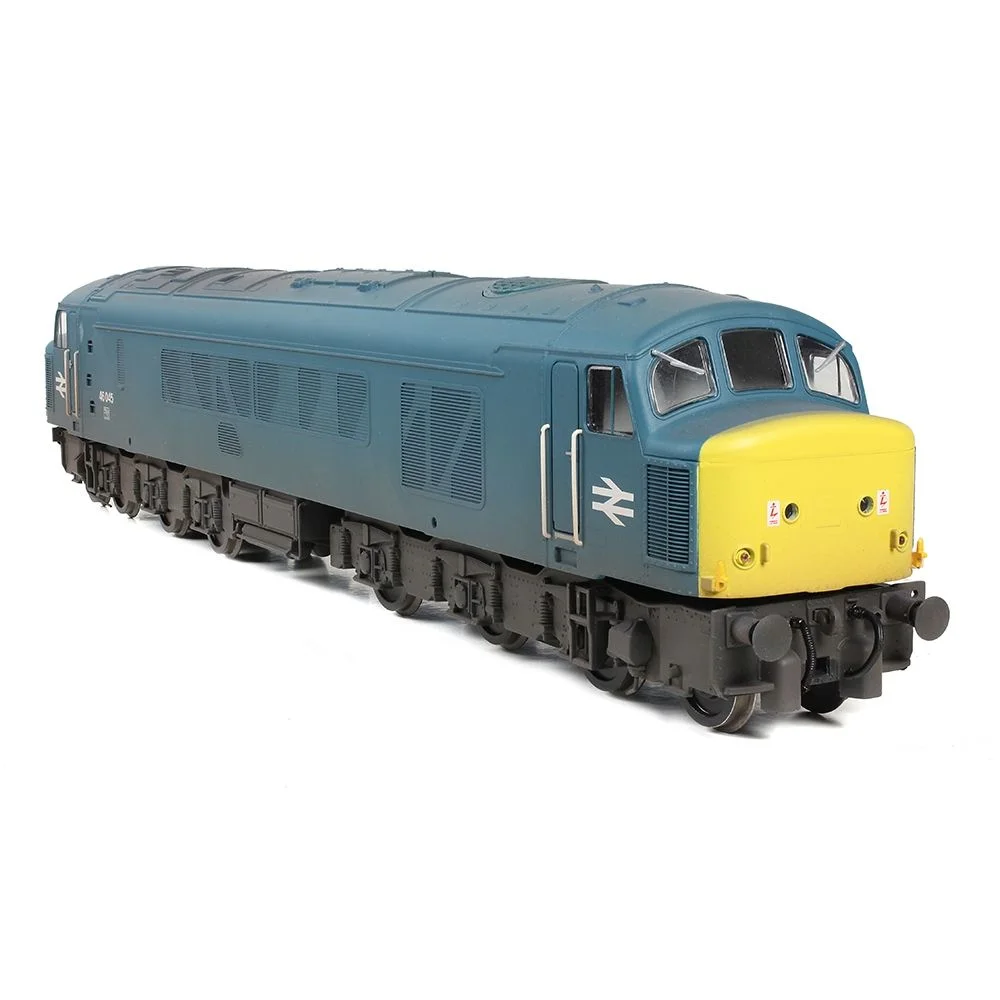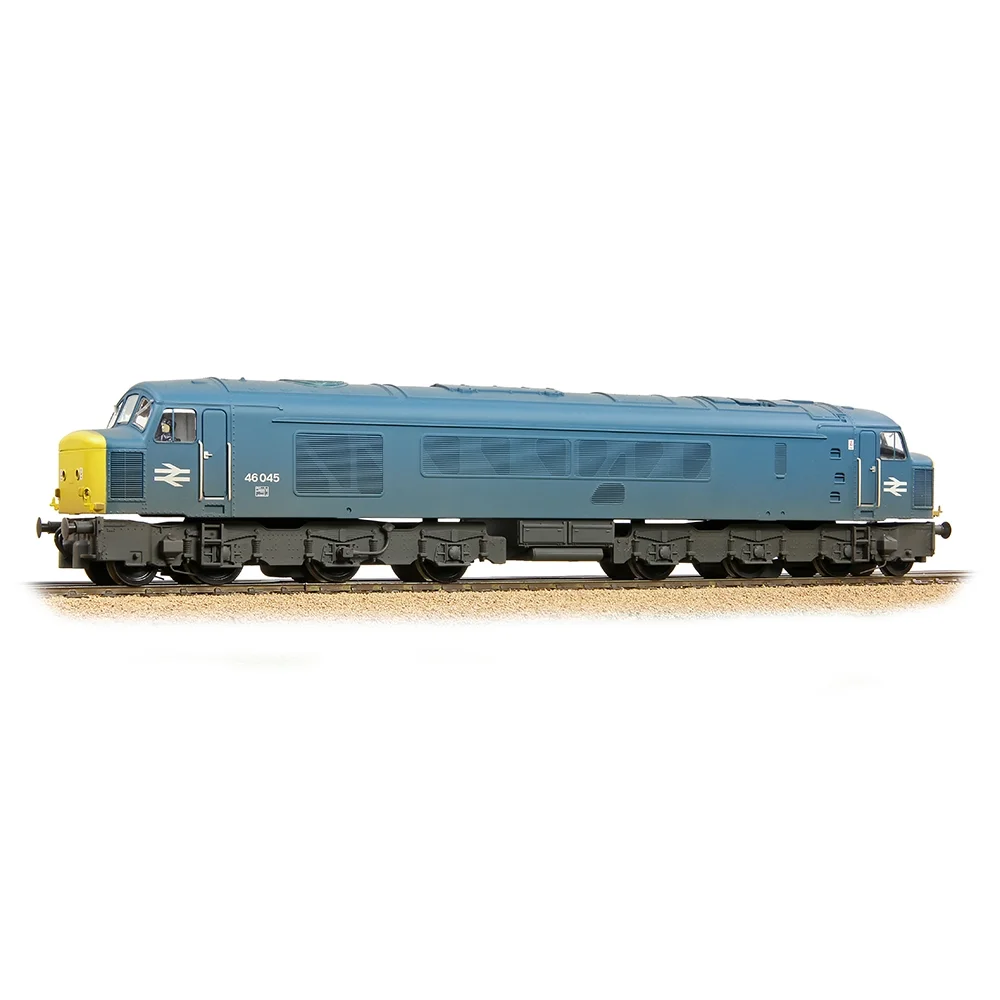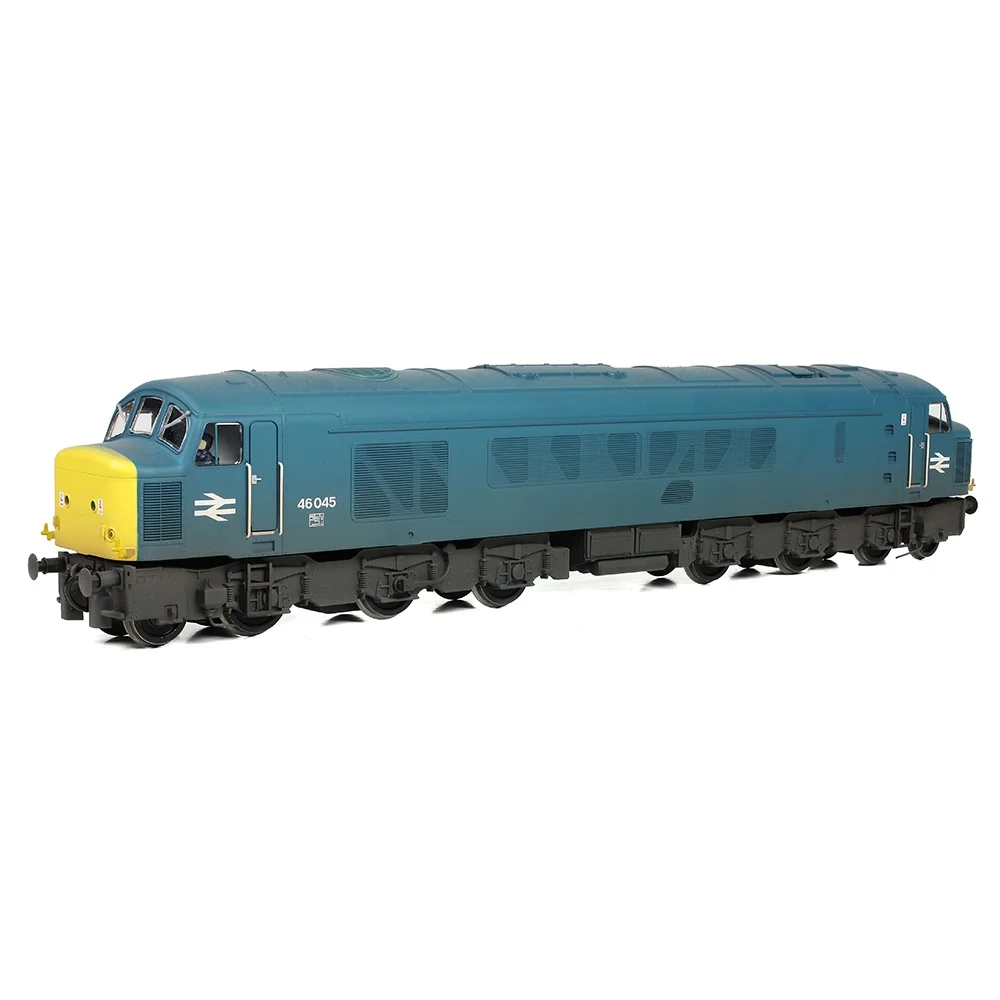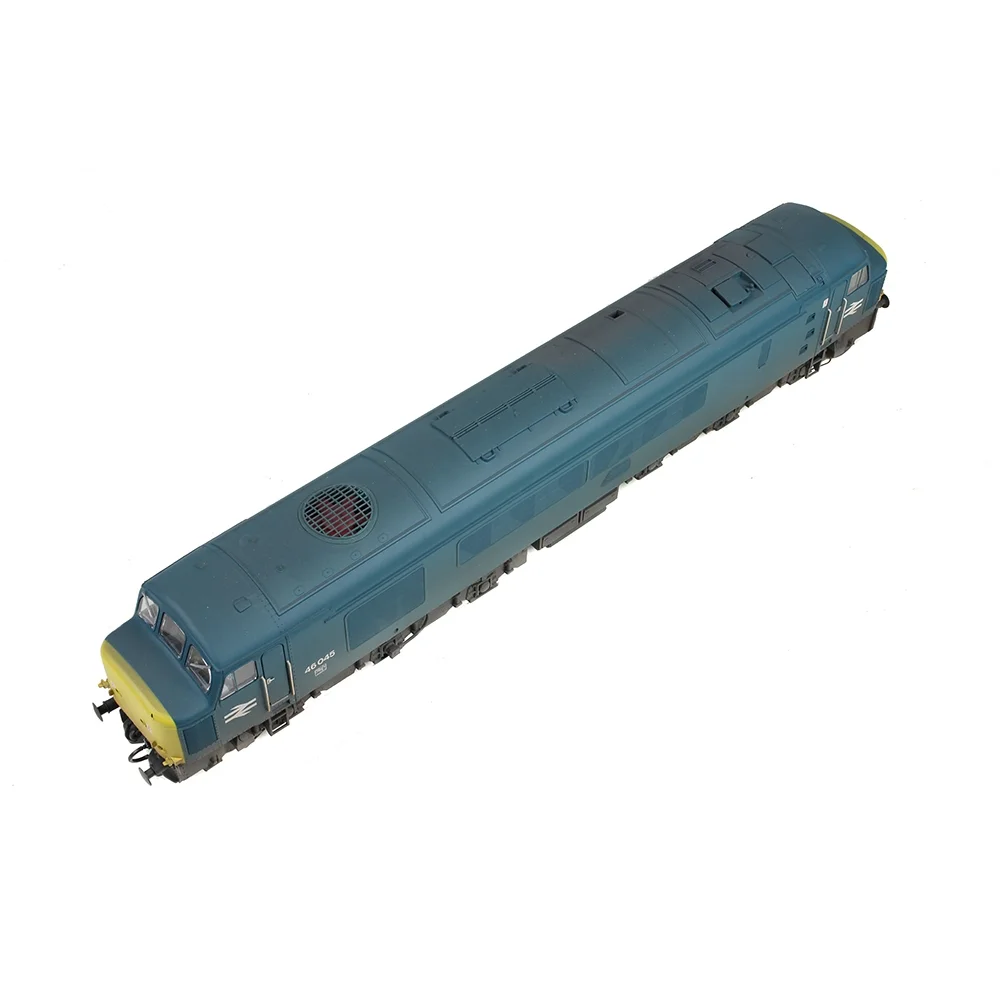Bachmann 32-704
British Rail Class 46 46045 British Rail Blue
Bachmann's Description & Specifications
The popular Class 46 Diesel Locomotive returns to the Bachmann Branchline range with this OO scale model depicting No. 46045 in BR Blue livery after its headcode panels were removed and sealed beam headlights were fitted. Together with the Class 44s and 45s the classes were commonly known as the ‘Peaks’, because the Class 44s had been named after mountains in England and Wales, however all but one of the 56 Class 46s went unnamed.
- Bachmann Branchline OO Scale
- Era 7
- Weathered BR Blue livery
- Running No. 46045
- Locomotive is now Preserved
- Sealed Beam Headlights
- NEM Coupling Pockets
- Sprung Buffers
- Powerful 5 Pole Motor with Twin Flywheels
- Detailed Cab Interior with pre-fitted Driver in one cab
- Directional Lighting
- Locomotive Ready to Accept a Speaker
- Accessory Pack
- Equipped with a 21 Pin DCC Decoder Socket – recommended Decoder item No. 36-557A
- Length 275mm
Class & Prototype
- Class: British Rail Class 46
- Traction: Diesel
- Transmission: Electric
- Built: 1961-1963
- Total Built: 56
The British Rail Class 46 comprised 56 Sulzer Type 4 diesel-electric locomotives built at Derby Works 1961-1963 (numbered D138-D193, later 46001-46056). Distinguished from the otherwise identical Class 45 by Brush electrical equipment rather than Crompton Parkinson systems, the class served 23 years on express passenger and heavy freight duties including the famous Cornwall-Staffordshire china clay trains. The unique Brush equipment validated through Class 46 service directly enabled the successful Class 47's development. Withdrawn by Christmas Day 1984, only three locomotives survive in preservation (5.4% survival rate). Available in OO gauge from Bachmann and comprehensive new N gauge range from Rapido Trains UK (2025).
No prototype found.
Operator & Livery
- Operator: British Rail
- Livery: Blue
British Rail (1965-1997) transformed Britain's railways through revolutionary modernisation, introducing the iconic double arrow logo, Rail Blue livery, and business sectorisation. BR pioneered high-speed rail with the InterCity 125 and Advanced Passenger Train, electrified major routes, and created profitable divisions like InterCity and Network SouthEast. From steam succession through diesel and electric development to privatisation preparation, British Rail's diverse locomotive fleet, multiple livery schemes, and operational scenarios provide unparalleled variety for railway modellers across all scales and periods.
BR Blue, also known as Rail Blue or Monastral Blue, was introduced in 1965 as part of British Rail's comprehensive corporate identity overhaul that accompanied the rebranding from British Railways to British Rail. The colour was officially defined by British Standards BR28/6001 (airless spray finish) and BR28/5321 (brush finish), representing a dark, greyish blue tone specifically chosen to hide dirt and weathering effects well.
The livery was prototyped on the experimental XP64 train in 1964 before becoming the standard scheme from 1 January 1965. Rail Blue was applied to all diesel and electric locomotives with yellow warning panels (initially small, then extending to full yellow ends from 1966). The standardised application included the iconic double arrow logo and Rail Alphabet typeface, creating one of the most successful transport corporate identities of the 20th century.
The livery dominated British Rail operations for over two decades until sectorisation in the 1980s began fragmenting the unified appearance. Despite initial colour fading problems in early applications, these were resolved by the late 1970s when the Large Logo variant was introduced featuring extended yellow areas and full-height double arrow symbols. Rail Blue's enduring appeal among railway enthusiasts reflects its role as the definitive British Rail image during the organisation's most unified period.



